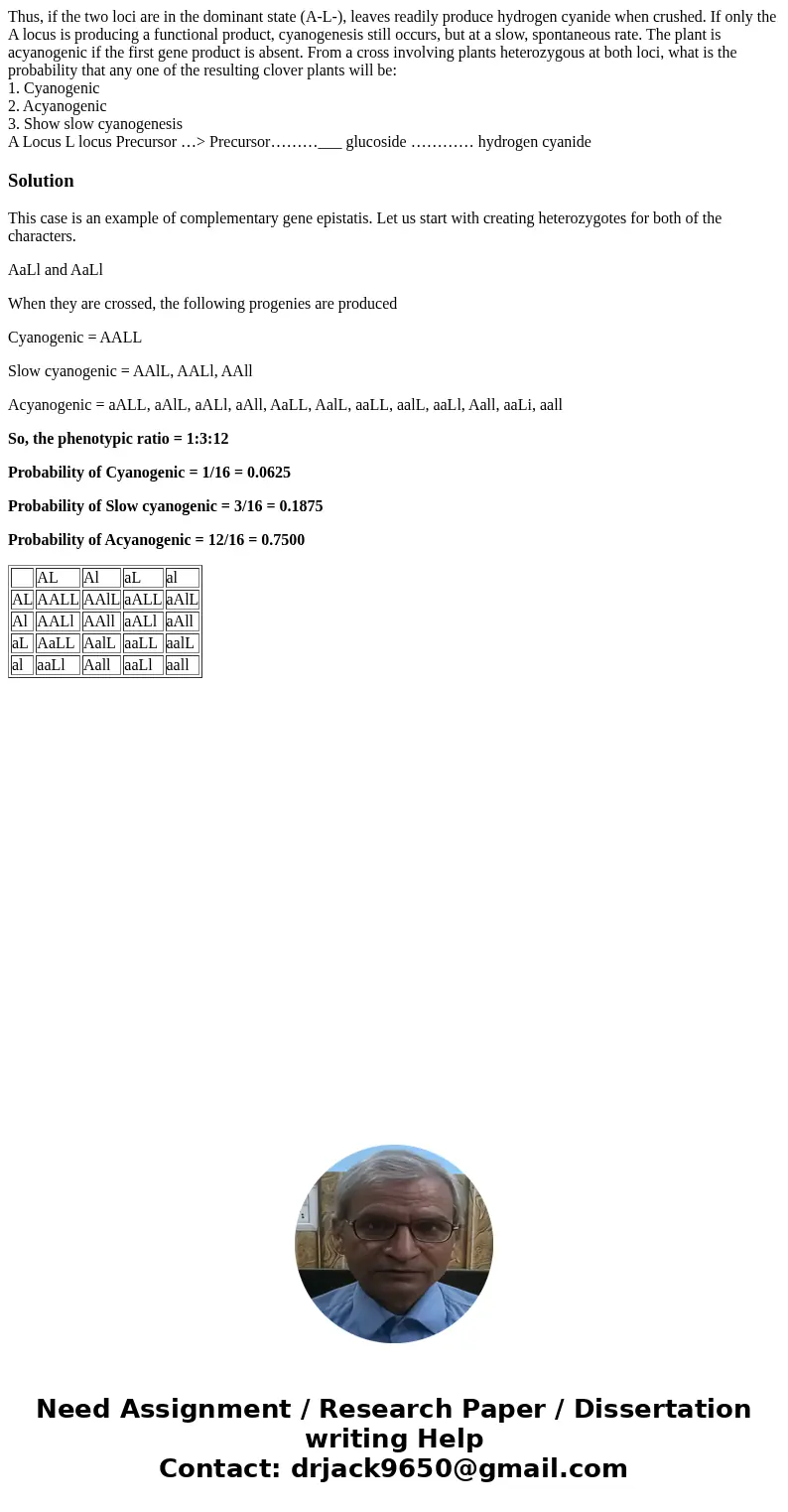Thus if the two loci are in the dominant state AL leaves rea
Thus, if the two loci are in the dominant state (A-L-), leaves readily produce hydrogen cyanide when crushed. If only the A locus is producing a functional product, cyanogenesis still occurs, but at a slow, spontaneous rate. The plant is acyanogenic if the first gene product is absent. From a cross involving plants heterozygous at both loci, what is the probability that any one of the resulting clover plants will be:
1. Cyanogenic
2. Acyanogenic
3. Show slow cyanogenesis
A Locus L locus Precursor …> Precursor………___ glucoside ………… hydrogen cyanide Solution
This case is an example of complementary gene epistatis. Let us start with creating heterozygotes for both of the characters.
AaLl and AaLl
When they are crossed, the following progenies are produced
Cyanogenic = AALL
Slow cyanogenic = AAlL, AALl, AAll
Acyanogenic = aALL, aAlL, aALl, aAll, AaLL, AalL, aaLL, aalL, aaLl, Aall, aaLi, aall
So, the phenotypic ratio = 1:3:12
Probability of Cyanogenic = 1/16 = 0.0625
Probability of Slow cyanogenic = 3/16 = 0.1875
Probability of Acyanogenic = 12/16 = 0.7500
| AL | Al | aL | al | |
| AL | AALL | AAlL | aALL | aAlL |
| Al | AALl | AAll | aALl | aAll |
| aL | AaLL | AalL | aaLL | aalL |
| al | aaLl | Aall | aaLl | aall |

 Homework Sourse
Homework Sourse